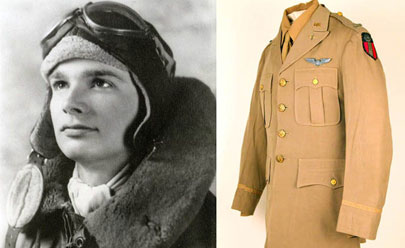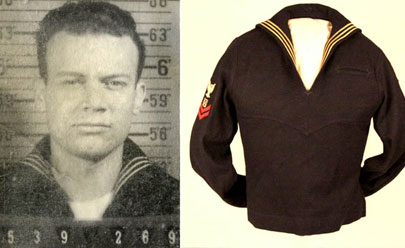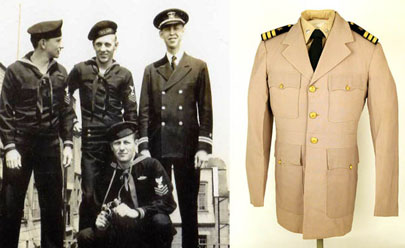FEATURED ARTIFACTS: JACKETS
Commemorating a Worldwide Victory
Over sixteen million Americans served in the military during World War II. Nearly 420,000 of them did not get to enjoy the victory they fought to secure. Each June at The National WWII Museum, we commemorate the Allied landings in Normandy, as they marked a major milestone on the road to victory in Europe.
However, it is important to remember that D-Day was but one part of a much larger war that required the cooperation and teamwork of the United States and her allies across the globe. The uniforms in this case represent servicemen from each of America’s service branches. These men served all over the world, some of them in combat and others in supporting roles behind the lines. All of them, along with the comrades in arms they represent, played a vital role in our victory over the Axis.
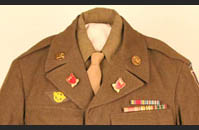 United States Army — Technician 4th Grade Philip A. Lunday
United States Army — Technician 4th Grade Philip A. LundayPhilip Lunday was inducted into the Army in June 1943. He volunteered for the 10th Mountain Division, but instead was routed to the Army Specialist Training Program. He completed basic training at Fort Leonard Wood, Missouri, and after further training with the combat engineers, he was finally assigned to D Company of the 126th Engineer Mountain Battalion, part of the 10th Mountain Division. Lunday served in Northern Italy, where his unit constructed a tramway up Riva Ridge. This tramway allowed wounded men to be carried down on cables in ten minutes, rather than facing a four-hour trip down the ridge on foot.
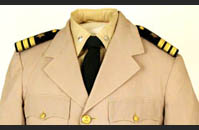 United States Navy — Commander Fred Gerretson
United States Navy — Commander Fred GerretsonFred Gerretson led a Navy combat photography team of three enlisted men in the second wave of landings on Utah Beach on D-Day. Gerretson brought three cameras with him to the beach, one of which was destroyed by shrapnel as he brought it up to his face to take a picture. Although Gerretson took still and motion pictures throughout Normandy and the invasion of Southern France, he did not see any of the pictures he took until after the war had ended.
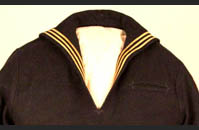 United States Coast Guard — Boatswain’s Mate Second Class Elmer Carmichael
United States Coast Guard — Boatswain’s Mate Second Class Elmer CarmichaelElmer Carmichael joined the Coast Guard in June 1942. He was assigned to the USS LCI(L)-85, one of twenty-four Coast Guard-manned landing craft in Flotilla 10. Carmichael participated in landings in North Africa, Sicily, Salerno and finally Normandy, where LCI(L)-85 was lost to German sea mines and artillery fire off Omaha Beach. Before his discharge in September 1945, Carmichael earned four campaign stars and the Coast Guard Commendation Medal.
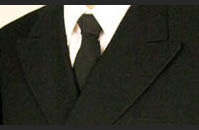 United States Merchant Marine — Lieutenant Junior Grade Edgar Allain
United States Merchant Marine — Lieutenant Junior Grade Edgar AllainLouisiana native Edgar Allain joined the Merchant Marine in New Orleans in April 1941 when he was only 17 years old. He began his maritime career as a wiper in the ship’s engine room but won a commission through a competitive examination in 1943. By the time the war ended, Allain was a junior engineer with certificates allowing him to operate any size steam engine. He continued to sail as a merchant seaman until the early 1950s.
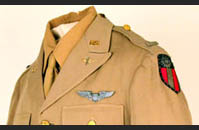 United States Army Air Forces — First Lieutenant Leo F. Dufrechou
United States Army Air Forces — First Lieutenant Leo F. DufrechouLeo Dufrechou received his commission in Lubbock, Texas, on 26 June 1944. After nearly a year of additional training, Lt. Dufrechou shipped out to the China-Burma-India Theater as a B-24 Liberator pilot. He arrived in theater in June 1945 and was assigned to the 14th Army Air Force’s 425th Bomb Squadron, 308th Bomb Group. Despite entering combat very late, Dufrechou flew nineteen missions before the war ended in September. He returned home in November 1945 and was discharged on 5 January 1946.
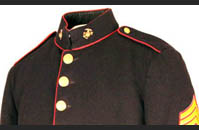 United States Marine Corps — Sergeant Charles S. Boyd, Jr.
United States Marine Corps — Sergeant Charles S. Boyd, Jr.The far flung campaigns in the Pacific Theater required massive logistical support. For every soldier and Marine in the front lines, there were dozens of men and women in an unbroken supply chain stretching from factories in the US to the combat zone. Charles Boyd was one link in that chain. He enlisted in the Marine Corps less than two weeks after Pearl Harbor. Boyd served as a supply sergeant in the South Pacific, where he earned one campaign star and a Good Conduct Medal before being discharged at Quantico, Virginia, in December 1945.

